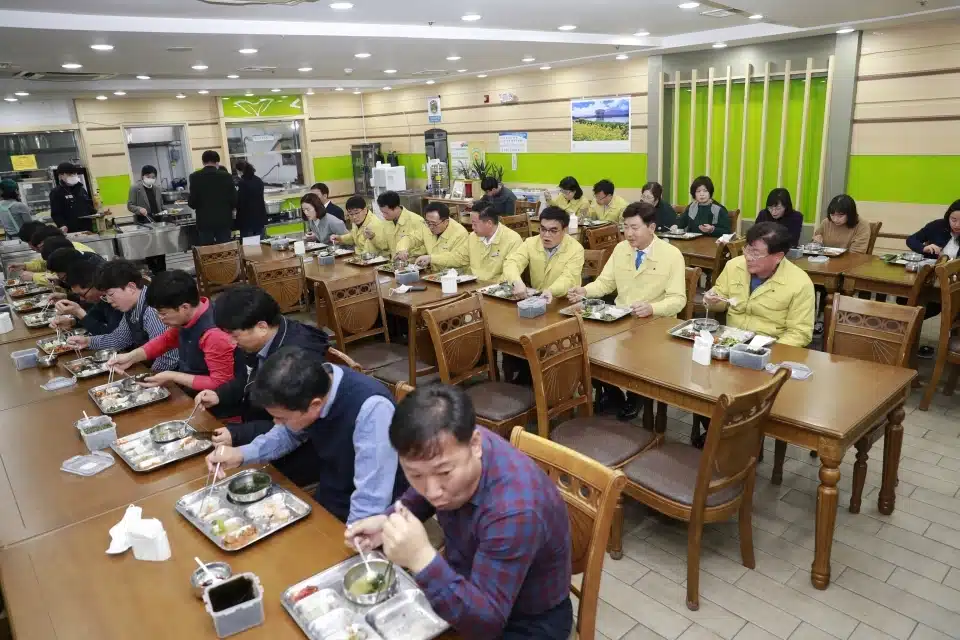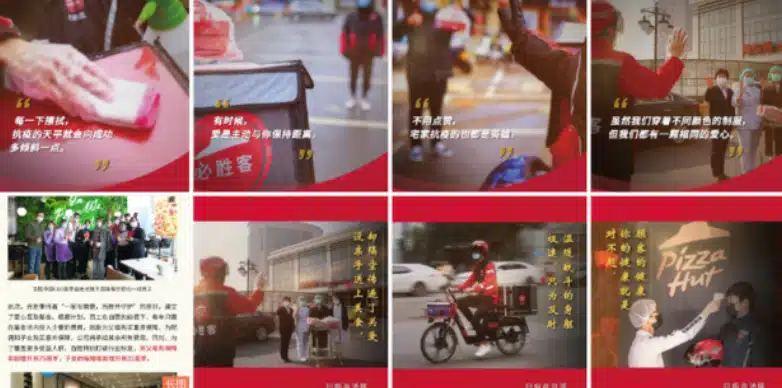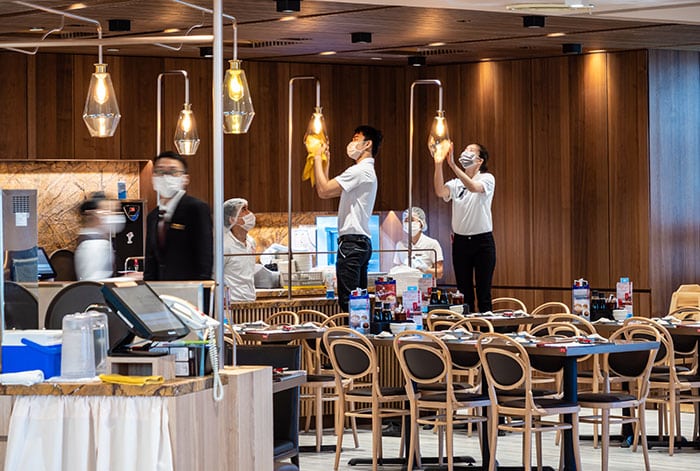The COVID-19 pandemic has brought about the worst crisis in the restaurant industry ever. But for leaders, it’s not time to hunker down—it’s time to plan for how to emerge from this global economic pause stronger than your competitors, with major opportunities to take share in. But the new normal may be very different from what you were used to before March 1. We’ve looked at other countries like China, Italy, Japan, and South Korea that are ahead on the COVID-19 curve compared to the United States. How the restaurant industry is emerging from the crisis there can provide us insights on what is likely to happen in the U.S. in a few months.

Longer Decline in Social Dining
As China and South Korea are emerging from the crisis, restaurants there have enacted specific dining room measures to keep guests safe. Some have installed glass or plastic barriers on tables to minimize direct contact following guest concerns over risk of infection in dining spaces. Restaurants that have not installed new fixtures are also following new hygiene guidelines by designating more spacing between tables and guests. Tables are placed at least 1 yard apart from each other, and guests sitting face-to-face from each other must be at least 1 yard apart.

Slow Recovery in Guest Traffic
As of March 31, Fidelity International reports that more than half of the restaurants in major cities in China have reopened. Yet traffic for large restaurants remains 40 to 50 percent lower as consumer confidence remains fragile. Yum China, for example, had shut down over 30 percent of its restaurants by February 16 and reported decline in same-store sales by 40 to 50 percent. Even though Yum China had reopened 95 percent of its restaurants by March 26, approximately 20 percent of operating stores still provide only delivery and takeout services.Similarly, while South Korea has outperformed other countries in managing the COVID-19 pandemic and has avoided widespread restaurant closures, many restaurants have shuttered their doors due to low guest traffic. Consumer confidence is low and is impacting recovery of guest traffic.

Sanitization Measures are Here to Stay
Restaurant employees in Japan, China, and other East Asian countries are pursuing various sanitization measures to ensure the safety of guests and staff, and to promote more consumer confidence. McDonald’s reopened 90% of their Chinese stores on March 9 with a marketing campaign highlighting their upgraded hygiene measures. All staff members must take their temperatures upon entering work, and are required to wash their hands at least once every hour. Similarly, Starbucks promoted its March 18 reopening in Hubei province with a campaign outlining their new hygiene policies and contactless experience for guests. Hand sanitizers are placed at the condiments station, while staff members routinely take temperatures.
Government Will Play a Bigger Role
Restaurants will likely need to contend with new government constraints that we already see in restaurants in East Asia, as well as at grocery stores around the U.S. For example, there could be mandatory social distancing between guests in restaurants, as well as capacity constraints. Staff might be required to wear masks and gloves, and be regularly monitored for fever.
Consumer Doubts Will Stay
Guests are likely to be more aware of restaurant hygiene and will demand more measures to ensure that their entire dining experience is safe from start to finish. They will likely be wary of any human interaction. When ordering, guests may prefer to order on-demand using devices that can be easily cleaned with wet wipes, rather than paper menus with a large surface area. They may also look for contactless payment options using mobile wallet or NFC.
Some Restaurants Will Go Under, but Others Will Thrive
Being strategic about these changes, on the other hand, can enable large restaurant brands to take significant market share during the ramp-up phase. When consumer expectations have been reset, they are more open to new brands that cater to their new needs. Brands that go farthest through the judicious use of self-serve technology and processes that limit human contact will reap the most benefits.To help restaurants during this difficult time, we’re offering our Contactless Dining Kit for free. The free kit enables guests to be waitlisted, view the complete menu, place orders, and pay at the table—without the need for any human contact. Learn more at presto.com/contactless.



